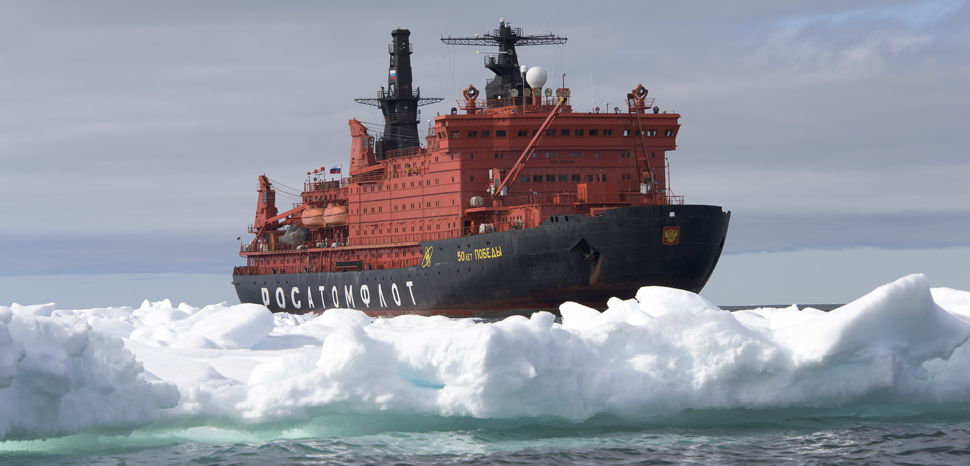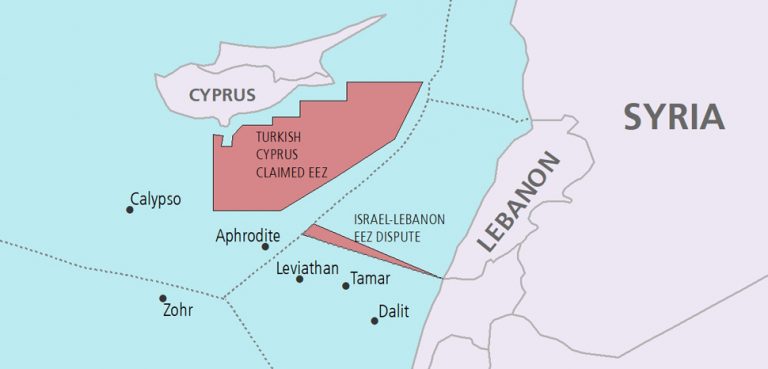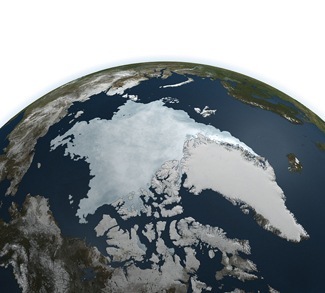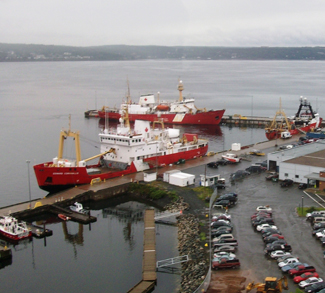The Arctic Ocean is one of the few places left unexplored on Earth. Its vast frozen landmass and seas encompass all that is north of 66° 33’N, otherwise known as the Arctic Circle. It is bordered by the United States (Alaska), Canada, Denmark (Greenland), Norway, Iceland, and of course, Russia. Outside of the littoral nations, Sweden and Finland are pertinent to the area and are also members of the Arctic Council created in 1996.
The Arctic Council is the leading intergovernmental forum promoting cooperation, coordination and interaction among the Arctic States, Arctic indigenous communities and other Arctic inhabitants on common Arctic issues, in particular on issues of sustainable development and environmental protection. A major focus is the melting icecap as it not only affects the coastal nations, but the rest of the world, and its work includes global climate change studies, funding the search for natural resources, and the delineating of Arctic borders.
There is no doubt the Arctic ice has been melting at an alarming rate. According to the National Snow and Ice Data Center, “Arctic sea ice extent for March 2018 averaged 14.30 million square kilometers (5.52 million square miles), the second lowest in the 1979 to 2018 satellite record.” The once harsh climate and frozen waters have receded and opened to the world. These newfound waterways are fundamental for several reasons. First, they can provide quicker and cheaper shipping lanes. Next, it is presumed they will give way to a hydrocarbon extraction boom. Finally, to protect these lucrative discoveries, nations will have to delineate and secure their Arctic borders.
Russia’s vast coastline makes it synonymous with the Arctic. Far more Russians live in the Arctic Circle than do Canadians, who share its second-largest border. Russia’s long search for a warm-water port assisted the exploration of its immediate north after World War II. Geopolitical tensions with the United States led to the creation of several Arctic bases on both sides. The Cold War is now supposedly over, yet Washington and Moscow maintain relations that are uneasy at best and dangerous at worst. In July 2007, a team of Russian scientists planted a Russian flag on the seabed at the North Pole. The symbolism speaks volumes, but determining its precise meaning is the difficult part. There are two schools of thought: Russia is either being aggressive and reviving historical trends of nationalism and expansion, it’s or being cooperative and simply aiding in the development of natural resources in the region. One may spark a new Cold War, the other could build a new world order. The United States Department of Homeland Security must determine which one it is.
The Northern Sea Route
Arctic travel routes have always existed, but they are dangerous and only viable in the summer months. As the ice melts faster, more lanes have opened. The Northern Sea Route (NSR) runs along the Russian Arctic coastline from the Kara Sea to the Bering Strait. More temperate waters allow the NSR to extend westward into Scandinavia and even the North Sea. According to the Wall Street Journal, this route could reduce the distance between Europe and China by as much as 40% compared to traversing the Suez Canal.
The U.S. and Russia are at odds regarding two Arctic shipping routes: the NSR and the Northwest Passage (connecting the Atlantic to the Pacific via Canada’s north). The former asserts that both routes fall within international waters and should not be claimed by any country. The latter says that the NSR is within Russia’s EEZ, and therefore Moscow has authority over it. Russia’s tremendous interest in the NSR is evident in their developmental policies and state papers. For example, in 2008, the Transport Strategy of the Russian Federation up to 2030 was created. According to the document, Russia plans to focus on developing the NSR by commissioning nuclear icebreakers, improving the ports along the shipping lane, and creating a ship monitoring system. In addition, Russia seeks to create numerous search and rescue (SAR) stations along the NSR. Clearly these are beneficial to the Russians.
International shipping has increased as the Arctic ice has melted. And it appears Russia is maintaining its control of the shipping lane via legal barriers, particularly regulations and tariffs on pollution, liability, insurance, etc. Alternatively, Pavel Devyatkin asserts that Moscow will eventually internationalize the NSR for the benefit of all. Both the China Ocean Shipping Company and the Danish-operated Maersk are interested in traversing the route. The NSR is still too new to know what will happen in the future. And though the US-Russia disagreement has yet to erupt as a major impediment to bilateral relations, it will continue to be a focus of the United States.
Hydrocarbons
The Arctic is believed to hold 13% of the world’s undiscovered oil and up to 30% of the world’s undiscovered natural gas supplies. In other figures from the United States Geological Survey, it was estimated that 33 geologic provinces have prospects for petroleum reserves. The sum of the mean estimates for each province suggest that 90 billion barrels of oil, 1,669 trillion cubic feet of natural gas, and 44 billion barrels of natural gas liquids may be lying in wait in the Arctic, of which approximately 84 percent is expected to occur in offshore areas. Russia, having the largest coastline in the Arctic, will therefore have a claim on many of these energy resources.
As with Russia’s involvement in the NSR, its energy interests are also multi-faceted. The Kremlin has put forth several government papers stressing the significance of hydrocarbons in the Arctic. The annual Development Strategies of the Russian Arctic espouse this fact. By exploiting Arctic resources, Moscow will lessen its reliance on diminishing supplies in Siberia. And in 2012, the Arctic shelf was established as a new territory for exploration by state-owned energy giants Rosneft and Gazprom.
Pavel Devyatkin argues that, given the amount of hydrocarbons present in Russian EEZs, there’s no need for Moscow to claim other nations’ supplies. In fact, Russia has much to gain by trying to draw in Western investment and technology. In 2012, ExxonMobil and Rosneft signed a deal worth $500 billion to cooperate on Arctic exploration; however, the deal ultimately fell through in 2017 due to geopolitical tensions and US sanctions. Russia also has successful ventures with both British Petroleum and the Norwegian government, and is believed to be looking into working with China.
Militarizing the Arctic
Given newly discovered riches in the Arctic, it makes sense that Russia would focus on it militarily to protect its ventures. Over the years of the Dimitri Medvedev-Putin regime, several government policies have been passed regarding the Arctic. Some are military focused, while others are more cooperative and economic focused. In February 2013, the Development Strategy of the Russian Arctic and the Provision of National Security for the Period Until 2020 was passed. It elaborated on a previous policy concerning the Arctic, and maintained that Russia’s national security issues were inseparable from those of the Arctic.
For example, one priority is the establishment of an integrated security system for the protection of territory, population, and critical facilities. National security in the Arctic requires an advanced naval, air force, and army presence in difficult environments. Further aims include developing the Russian icebreaker fleet, modernizing the air service and airport network, and establishing modern information and telecommunication infrastructure.
In addition, another policy from 2014 – the Military Doctrine of the Russian Federation – stated that soldiers must be stationed in the Arctic, even in times of peace. However, these policies appear to be empty words when compared to the actual figures.
There are 14 non-Russian bases within the Arctic Circle, much of them in Alaska, one in Norway and Greenland, and the rest in Canada. Russia has 17, at least six of which are new. They comprise of both air and naval bases. Russia’s Arctic military buildup began in 2007, a month after the flag planting. Its Northern Fleet currently maintains approximately 40 submarines (many with nuclear capabilities), one aircraft carrier, 17 larger ships, 33 auxiliary ships, 100 planes, and 40 helicopters. It is true that the Northern Fleet is significantly less than that of the Cold War. However, Russia is also increasing its missile defense system.
Russia has also participated with NATO countries in joint military and search-and-rescue (SAR) exercises. From 2010-2013, Russia and Norway held naval drills in the Barents Sea and since 2015 have held joint Northern Fleet and Norwegian Coast Guard drills. Russia also conducted exercises with France, the United Kingdom, and the U.S. (FRUKUS), but these ended in 2013. When Vladimir Putin annexed Crimea, NATO drills with Russia were halted. In 2015, the coast guards of the eight Arctic Council nations established the Arctic Coast Guard Forum (ACGF) to coordinate emergency responses.
The US Response
The Arctic continues to be a largely overlooked aspect of the United States’ national security picture. The most recent policy overhaul came in 2013, when then defense secretary Chuck Hagel announced an update to the 2009 Department of Defense (DoD) Arctic Policy. The 2016 National Defense Authorization Act (NDAA) also provided significant funding for the Alaskan and Arctic Region. The policy sought to increase coast guard cooperation, upgrade ports, and seek out funding and political will for new icebreakers. This last item is very important as the U.S. only has three icebreakers compared to Russia’s 30. According to Admiral Stavridis, seven of them are nuclear powered, including their newest addition, the Arktika, which has 80,000 horsepower and is 567 feet long; it can break up to 10 feet of ice at a time. The new NDAA funding is necessary, especially since Russia is elevating its presence in the Arctic. And going by the rare show of bilateral support in the NDAA’s passage by a wide margin, it’s clear that the Senate understood that.
Also in 2016, the DoD submitted a report to Congress entitled Strategy to Protect United States National Security Interests in the Arctic Region. According to the report: “It is also in the DoD’s interest to shape military activity in the Arctic region to avoid conflict while improving its capability to operate safely and sustain forces in a harsh, remote environment in anticipation of increasing accessibility and activity in the Arctic in the coming years.” Additional components comprise of infrastructure, preserving freedom of the seas, and strengthening alliances. As with the NDAA, this policy is heading in the right direction given Russia’s current and potential future aggression.
If the president and the Department of Homeland Security do not deem the Arctic a concern, perhaps the U.S. should let the other NATO littoral nations take charge. The European Command of NATO (EUCOM) would be a good fit. They are on the frontlines in the region in question, are already keeping watch over Russia’s actions, and Norway and Denmark are actively working with Russia on joint ventures and exercises.
Looking Ahead
Is the Arctic a pressing security threat? The answer comes down to your take on the intentions of Russian President Vladimir Putin. Putin is an interesting leader. He is a former KGB intelligence officer who witnessed the collapse of the Fatherland under Boris Yeltsin in the late 1990s, and has since gone on to run the country in one form or another for nearly two decades. Under his watch, Russia annexed Crimea, supported separatists in Ukraine, went to war with Georgia, and engaged in a long and bloody conflict in Chechnya. Putin’s history and Russia’s recent territorial irredentism is significant to note.
Though it’s true that no fighting has taken place in the Arctic, the region has seen no land grabs, and military installations are still significantly lower than during the Cold War, Putin’s foreign policy actions elsewhere do not inspire confidence. In 2014, Putin declared: “You can do a lot more with weapons and politeness than just politeness.” Despite the fact that these words were spoken four years ago in reference to a soldier in Crimea, they still can apply to his views on the Arctic. By appearing to be cooperative, Russia is slowly gaining an advantage – but one must always approach Russia with realist skepticism. The United States should be leery of Russian involvement in the Arctic; they are not a friend but a foe. Perhaps Putin himself put it best: “Russia never lost the Cold War… because it never ended.”
The opinions, beliefs, and viewpoints expressed by the authors are theirs alone and don’t reflect any official position of Geopoliticalmonitor.com.




